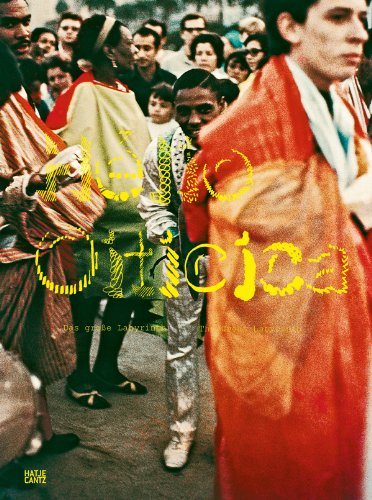| Titre : | Helio Oiticica : The Great Labyrinth | | Type de document : | texte imprimé | | Auteurs : | Hélio Oiticica, Auteur ; MMK museum, Directeur de publication, rédacteur en chef | | Editeur : | Ostfildern (Allemagne) : Hatje Cantz | | Année de publication : | 2013 | | Importance : | 1 vol. (336 p.) | | Présentation : | ill. en coul. | | Format : | 26 cm. | | ISBN/ISSN/EAN : | 978-3-7757-3729-6 | | Langues : | Allemand Anglais | | Catégories : | Art de performance
Art textile
Brésil
Environnement
Oiticica, Hélio
Participation sociale
Sculpture
| | Note de contenu : | Helio Oiticica (1937-1980) altered the Brazilian art scene, and his works broke with accepted conventions. His oeuvre was of great importance to the breakthrough of Tropicalia, the cultural movement that protested the repressions of the military regime. Experiment, proposition, participation and environment are the key words that place Oiticica's art firmly in the 1960s and 1970s. Coming from painting, he developed into one of the protagonists of a new concept of art: he actively involved the viewer in the presentations of his multimedia works, while the works--colorful, accessible, tangible, or wearable like a piece of clothing--filled the space. This participatory kind of eventful art is related to the democratization of the concept of art, as conceived by Joseph Beuys. Oiticica's writings and records, collected in this in publication, comprise a fascinating document of the transition from modern to contemporary art. "Seja marginal, seja heroi." ("Be marginal, be a hero.") --Helio Oiticica |
Helio Oiticica : The Great Labyrinth [texte imprimé] / Hélio Oiticica, Auteur ; MMK museum, Directeur de publication, rédacteur en chef . - Ostfildern (Allemagne) : Hatje Cantz, 2013 . - 1 vol. (336 p.) : ill. en coul. ; 26 cm. ISBN : 978-3-7757-3729-6 Langues : Allemand Anglais | Catégories : | Art de performance
Art textile
Brésil
Environnement
Oiticica, Hélio
Participation sociale
Sculpture
| | Note de contenu : | Helio Oiticica (1937-1980) altered the Brazilian art scene, and his works broke with accepted conventions. His oeuvre was of great importance to the breakthrough of Tropicalia, the cultural movement that protested the repressions of the military regime. Experiment, proposition, participation and environment are the key words that place Oiticica's art firmly in the 1960s and 1970s. Coming from painting, he developed into one of the protagonists of a new concept of art: he actively involved the viewer in the presentations of his multimedia works, while the works--colorful, accessible, tangible, or wearable like a piece of clothing--filled the space. This participatory kind of eventful art is related to the democratization of the concept of art, as conceived by Joseph Beuys. Oiticica's writings and records, collected in this in publication, comprise a fascinating document of the transition from modern to contemporary art. "Seja marginal, seja heroi." ("Be marginal, be a hero.") --Helio Oiticica |
|  |



